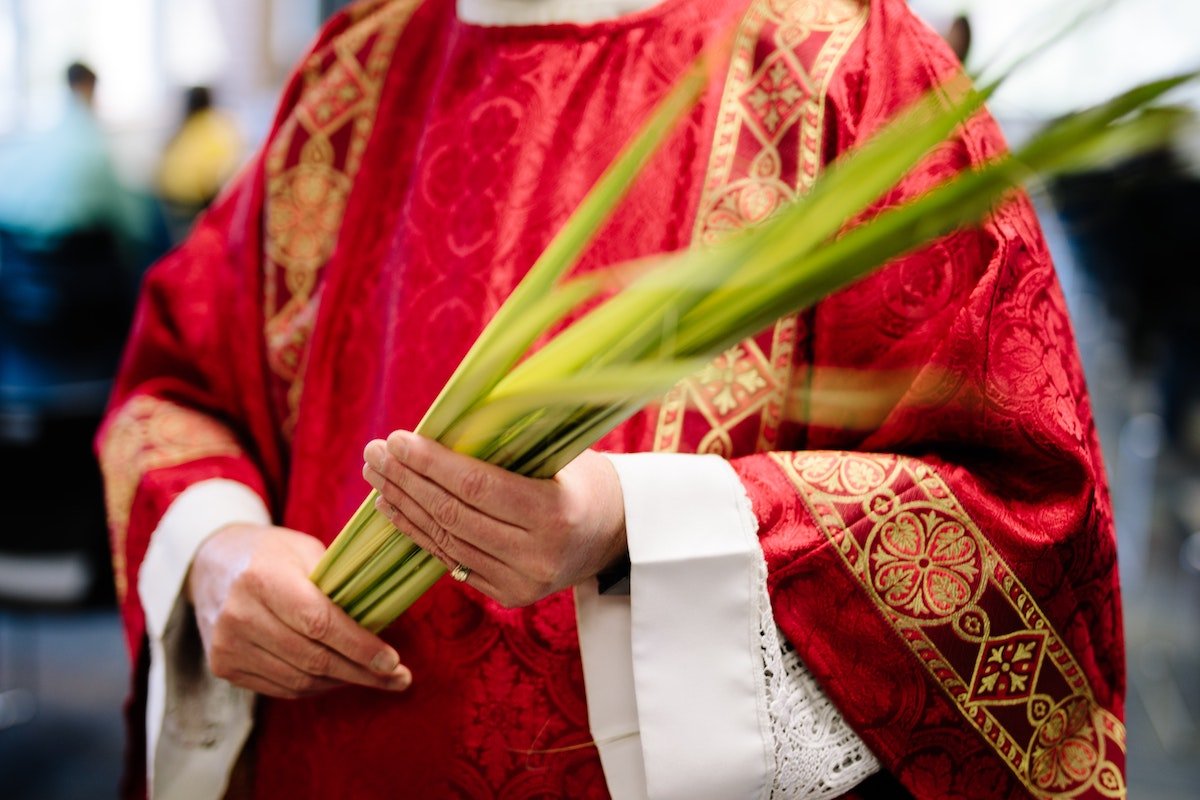PALMS SUNDAY OF THE PASSION OF THE LORD
On this day the Church recalls the entrance of Christ the Lord into Jerusalem to accomplish his Paschal Mystery. The memorial of this entrance takes place using the Procession or Solemn Entrance before the Mass.
BIBLICAL BACKGROUND
All four gospels report about the solemn entrance of Jesus into Jerusalem before his passion. He rides a donkey and both Matthew and John interpret it as a fulfillment of Zech 9:9. Jesus presents himself as a king of peace and justice which combines both royal prerogatives and renouncing to violence. The accompanying folk praises him as the messianic king.
HISTORY
While the Church in Jerusalem used to commemorate this day by a procession, the Western Church was rather highlighting this day from the perspective of preparation for Easter and baptism. Those who were to be baptized at Easter would receive the Creed and they would be anointed with the oil of Catechumens. Therefore the gospel reading was about the anointing of Jesus Bethany (John 12:1-11) followed by the entrance of Jesus into Jerusalem (John 12:12-16). Thus the Sunday received the name Palm Sunday (first coined around 600 in Spain and Gallia), although no procession was taking place yet. Dramatic-liturgical imitations of the events of the entrance only started in the 8th century. Palms were substituted by other green branches if needed and the Middle Ages saw more expansions of these customs. Christ would be represented in the procession through the cross, the book of the gospel or even the Eucharist carried in a ciborium. A figure of Christ used to be carried many times on a wooden donkey.
In Rome, the emphasis was entirely on the remembrance of passion, and the celebration of Easter was inaugurated by the reading of the passion story according to Matthew. The celebration with the palm procession was introduced much later.
LITURGICAL CELEBRATION
Liturgy allows three ways to celebrate today’s liturgy.
- The Procession from outside of the main church with the participation of all the faithful.
- The Solemn Entrance is celebrated inside the church before the principal mass.
- The Simple Entrance, approaching the altar with the entrance antiphon.
The passion story of Jesus according to Matthew, Mark, and Luke are read each year during the liturgy. While the entrance of Jesus to Jerusalem celebrates him as a king and victor anticipating his glorification, the mass places more emphasis on his passion and upcoming death. This brings a moment of tension into the celebration: passion and death versus resurrection and glorification. These two poles are not to be reduced to historicizing attempts but experienced as a meaningful unit.
POPULAR CUSTOMS
Popular devotions attributed magical powers to the palm branches. They were supposed to protect the house and its inhabitants from danger. Thus, people used to consume the buds of the branches to prevent diseases; arrange the branches in the form of a cross in the fields, or burn them to keep storms, lightning, and hail away; attach the branches to a crucifix in the house to protect its inhabitants and to ward off pest and insects from animals and plants, foxes from harassing chicken.
The branches would also be collected, burnt, and used as ashes for the following year’s Ash Wednesday.


